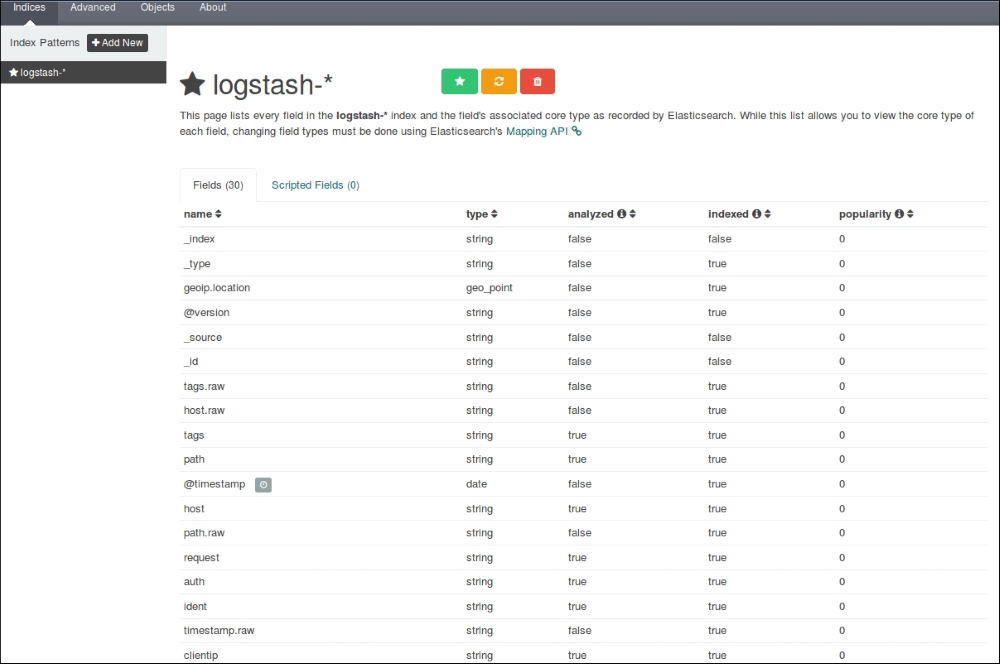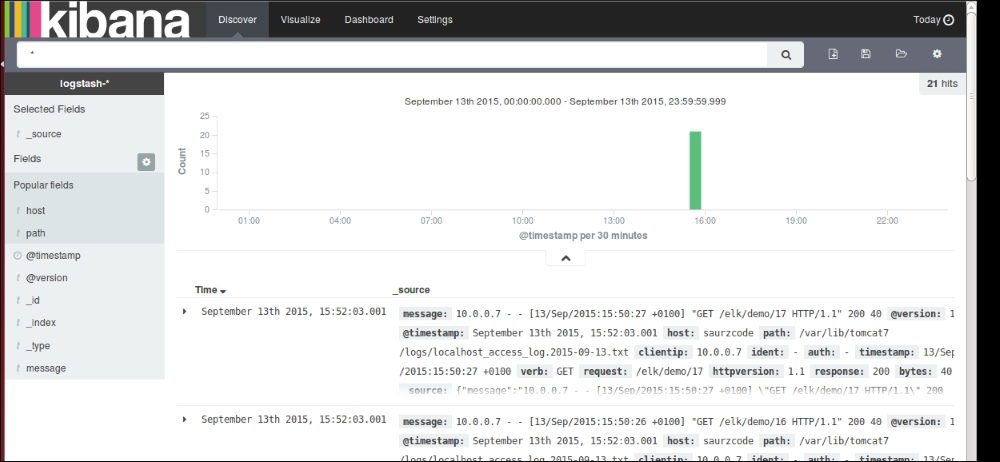In the previous chapters, we looked at the basics of Elasticsearch, Kibana, and Logstash. We saw the configurations and properties of each of them, and tried to understand what role each of the components plays in building a data pipeline for your data.
Now we will apply everything that we have learnt so far. We'll create an end-to-end running solution to analyze logs using ELK Stack.
For demo purposes, we will use a sample web application that runs on the Tomcat server. We'll set up ELK Stack, where we'll use Logstash to collect, parse and index access logs to Elasticsearch. Finally, we'll see various searches and visualizations on it in the Kibana interface.



